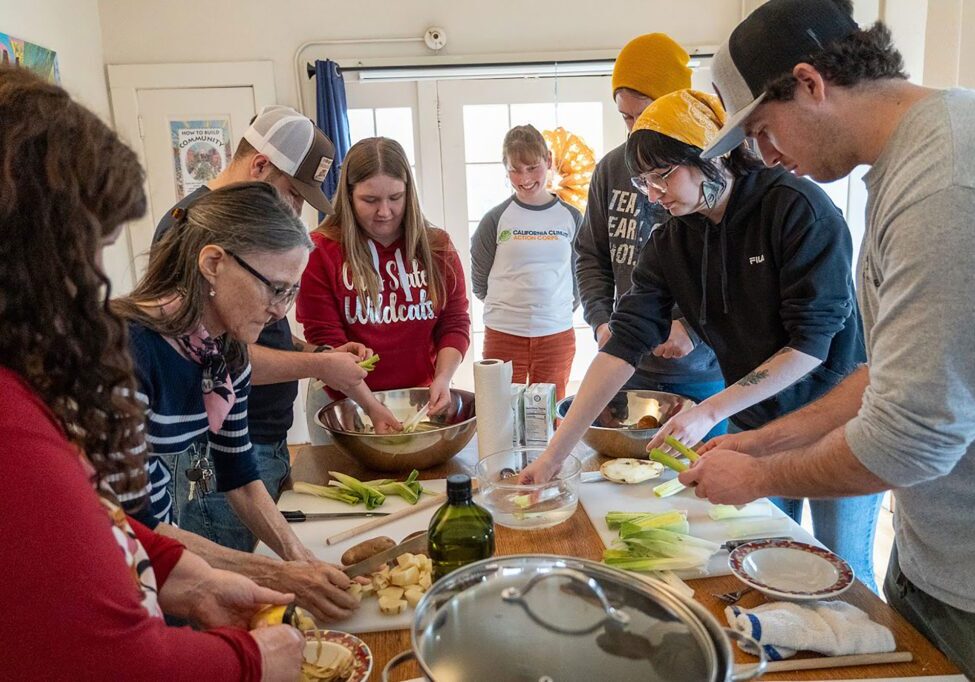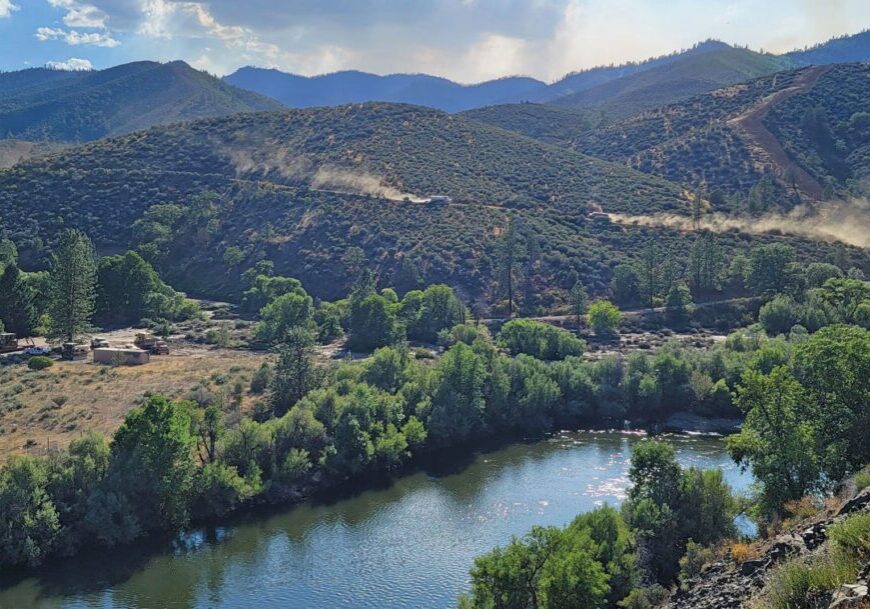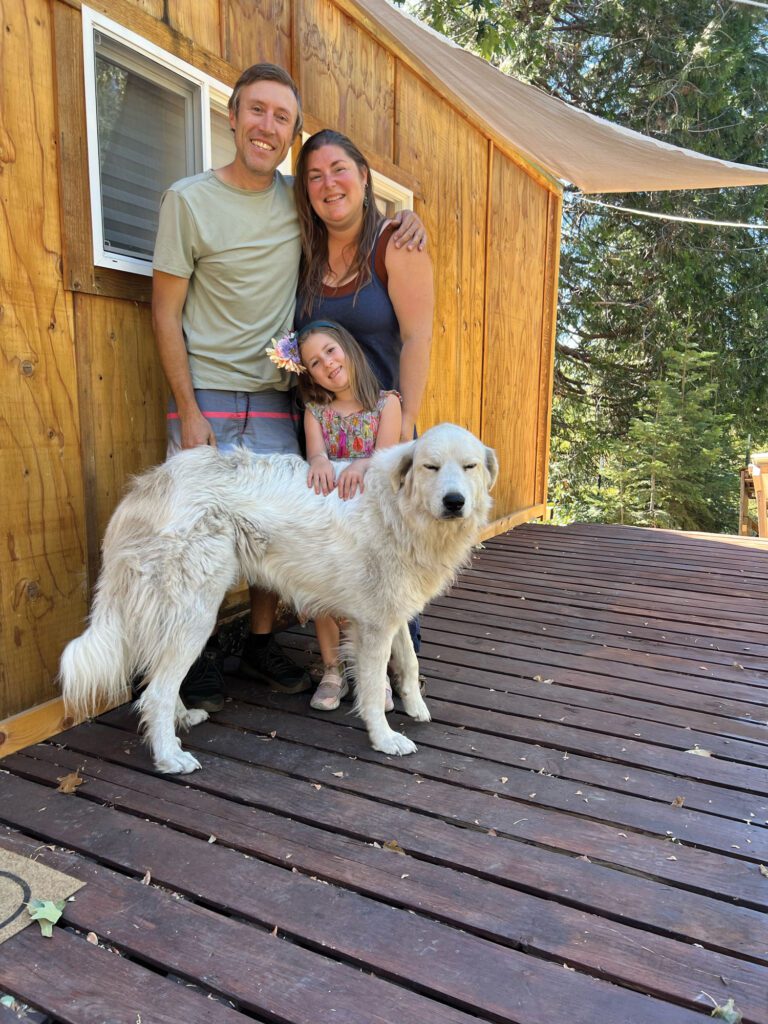
Shane McClellan, ilanna Greenfield, their daughter Ayla and their dog Nona walk their talk by living in a tiny house of their own.
As the world becomes increasingly aware of the need for sustainable living, innovative housing solutions can align with eco-conscious values. Alternative housing such as tiny homes and cabin kits are redefining the way families live by using building materials that can withstand the elements while effectively taking into account space constraints. Two different companies in the North State, LV Tiny Houses and Design Horizons LLC, provide custom builds to fit a plethora of housing needs and environmental challenges.
Disaster resistant housing
Vern Sneed, owner of Design Horizons LLC in Chico, took his Bachelor of Science in Architecture from the University of Kansas and in 2001 founded a California company to build commercial projects in San Francisco. He eventually moved to the North State, where he’s been raising his children and developing his Q Cabin Kits..
One aspect that sets Q Cabins apart from other cabin kits is their fires resistance. “A couple of years after several Wildfire Urban Interface Zone projects in California, we developed a standard set of details that provided a 100% non-combustible structure: non-combustible siding, over non-combustible sheathing, over non-combustible structural members. Nothing in the structural assembly will catch fire if exposed to flame,” Vern says.
The use of steel is what sets the cabins apart from other types of building materials. Wood combusts at 650 degrees, but steel combusts at 2300 degrees and the average temperature of a wildfire is 1500-1800 degrees. Along with its resistance to fire, steel can handle the stress from an earthquake or snow load much better than wood. Additionally, steel is easily recycled over and over, whereas wood is not, and steel does not dry rot or get infested by termites. For all these reasons, Vern believes steel to be a superior building material.
Vern chooses beautiful, resilient and durable building materials for the Q Cabin kits because, as he says, “We only have one earth. It is disrespectful to the earth to be wasteful with materials and resources. As a designer in the built environment, I feel humbled by my attempts to create beautiful buildings worthy of their time on the planet.”

The all-steel structure makes the beautiful homes built by Vern Sneed of Design Horizons, LLC remarkably resistant to the fires that sweep our region. Photo credit: Design Horizons, LLC.
If a family is looking for a larger home, Q Cabins can be a very affordable choice, with homes as large as 4,000 square feet costing less than $200 per square foot. Plus, these steel homes require less upkeep, Vern says, allowing more time for family. The custom design elements can be tailored to a family’s lifestyle and needs.
He believes that non-combustible buildings are the future of housing. “Building from non-combustible materials and obeying the recommendations of Cal Fire for property maintenance are both essential to mitigating the losses from wildfire events,” he says. “I envision a future where fire moves through a mountain town leaving most structures intact instead of just leaving behind the metal tool sheds, the steel appliances, trampoline frames and metal mailboxes. The evidence of this concept is visible at every burn site,” Vern says. Visit Design Horizons LLC to find out more about Design Horizons and kit cabins.
Zero VOC interior, locally milled, small footprint houses
If you are looking for a dwelling with a smaller physical and environmental footprint, you might want to consider a “tiny house”. ilanna Greenfield and Shane McClellan, owners and founders of LV Tiny Houses in McCloud, built their own off-grid tiny home, which ignited the desire to start their own tiny house company. LV (Luna Verde) tiny house manufacturing company began in 2019 with a focus on natural elements and working within a green sustainable model.
Along with living an off-grid lifestyle, Shane has 20+ years of experience in general contracting and construction, so building tiny homes became a natural expression of Shane and ilanna’s sustainable values. ilanna says, “We started LV Tiny Houses to be able to provide people with high quality eco-sustainable housing in a market that has become extremely expensive for traditional housing and in a time where mobility is often necessary.”
LV tiny houses include an open floor plan, natural building products and have completely zero VOC (volatile organic compounds) interiors. “We mill much of our wood locally from fire mitigated trees and our homes are far less expensive than the majority of tiny houses on the market,” ilanna says.
“One of the best reasons to buy a tiny house is to buy a home debt free. To live simply so others may simply live. It saves time and money to focus on what truly matters, which is family. It can be utilized as your starter or as your forever home as your family grows and perhaps decides to build multiple tiny homes. Tiny houses typically increase in value over time, making them a solid choice for investments,” ilanna says. “My biggest take away from living tiny is it puts into perspective what’s important, which is family and interconnectedness with our planet.” ilanna says. Tiny houses can also function as in-law units and office spaces. Learn more about LV Tiny Houses at LV Tiny Houses.
Posted in: Planet Support
Comment Policy: All viewpoints are welcome, but comments should remain relevant. Personal attacks, profanity, and aggressive behavior are not allowed. No spam, advertising, or promoting of products/services. Please, only use your real name and limit the amount of links submitted in your comment.
You Might Also Like...
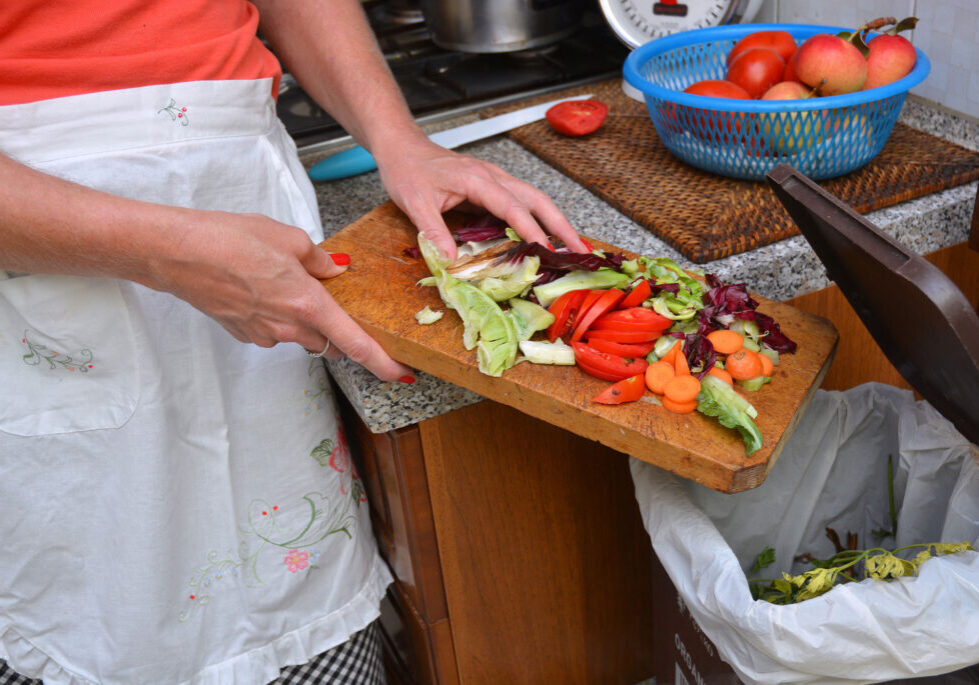
It’s Time to Talk Trash
We’ve all disposed of food scraps at some point, and if we bin them, we don’t usually think about what happens next. Here in California, over half of our trash […]
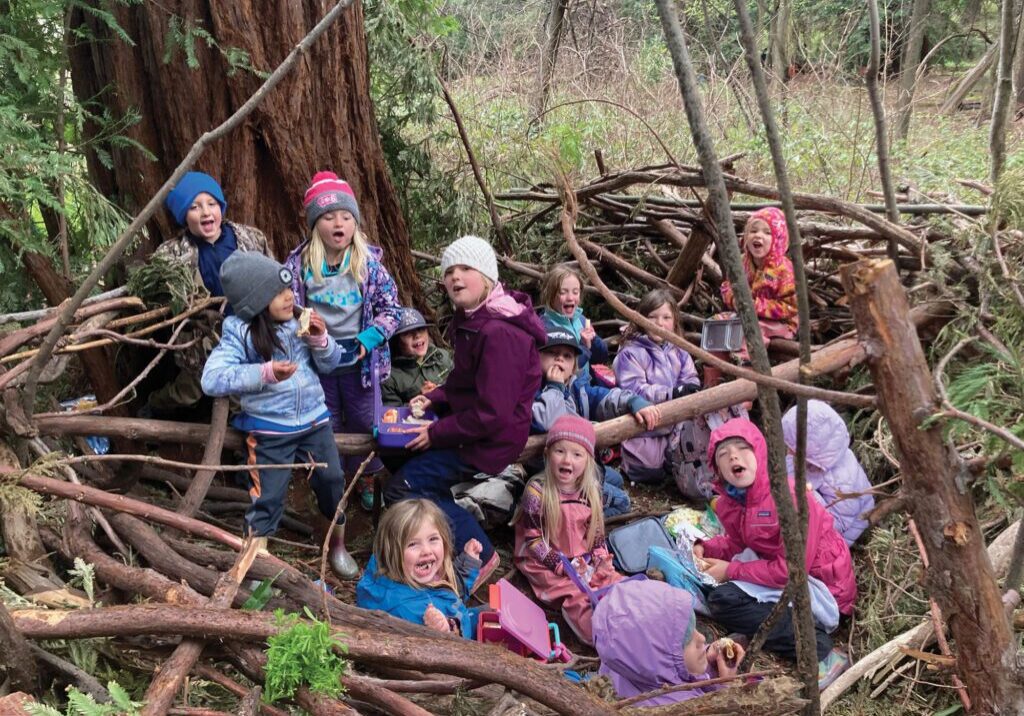
Teaching Our Children to Care for the Earth
“We are born with a connection to nature,” says Tim Corcoran in his book The Earth Caretaker Way. “But as we grow, we may lose conscious touch with that […]

In the Zone with Green Loan Support
Reduce, reuse and recycle are words most of us have heard since childhood. But for GreenLoan Support in Tehama County, it’s not just talk. GreenLoan Support means to make this […]

From Byproduct to Bio-product: Northern Californians are Making it Happen
Many of us have felt the satisfaction of keeping paper, cans and plastic out of landfills. But did you know that northern California businesses and programs are similarly keeping biomass […]



